Abstract
OBJECTIVES: We examined the associations of residential segregation with poor birth outcomes (low birthweight, preterm) and with perinatal risk markers (maternal age, education and marital status, prenatal care and substance use, presence of paternal information on birth certificate) for foreign- and native-born black women in the Minnesota seven-county metropolitan area. METHODS: Data were from 1990-1999 Minnesota birth certificates linked to the 1990 U.S. census. We used multivariable logistic regression to examine the association of perinatal risk markers, low birthweight and preterm birth for foreign- and native-born black women by residential black concentration. RESULTS: Native-born black women had a higher prevalence of risk markers and were at almost 1.5 times the risk of foreign-born blacks for delivery of low-birthweight or preterm infants. Risk markers and poor birth outcomes were most prevalent in medium and high-black-concentration areas than low-concentration areas. Preterm birth was slightly positively associated with residential black concentration. CONCLUSIONS: Native-born black women were at higher risk than foreign-born women for delivery of preterm and low-birthweight infants. Residential black concentration was associated with risk markers and only slightly associated with preterm birth. Further study of why birth outcome differentials exist by nativity and residential black concentration may identify opportunities for community-based public health interventions.
Full text
PDF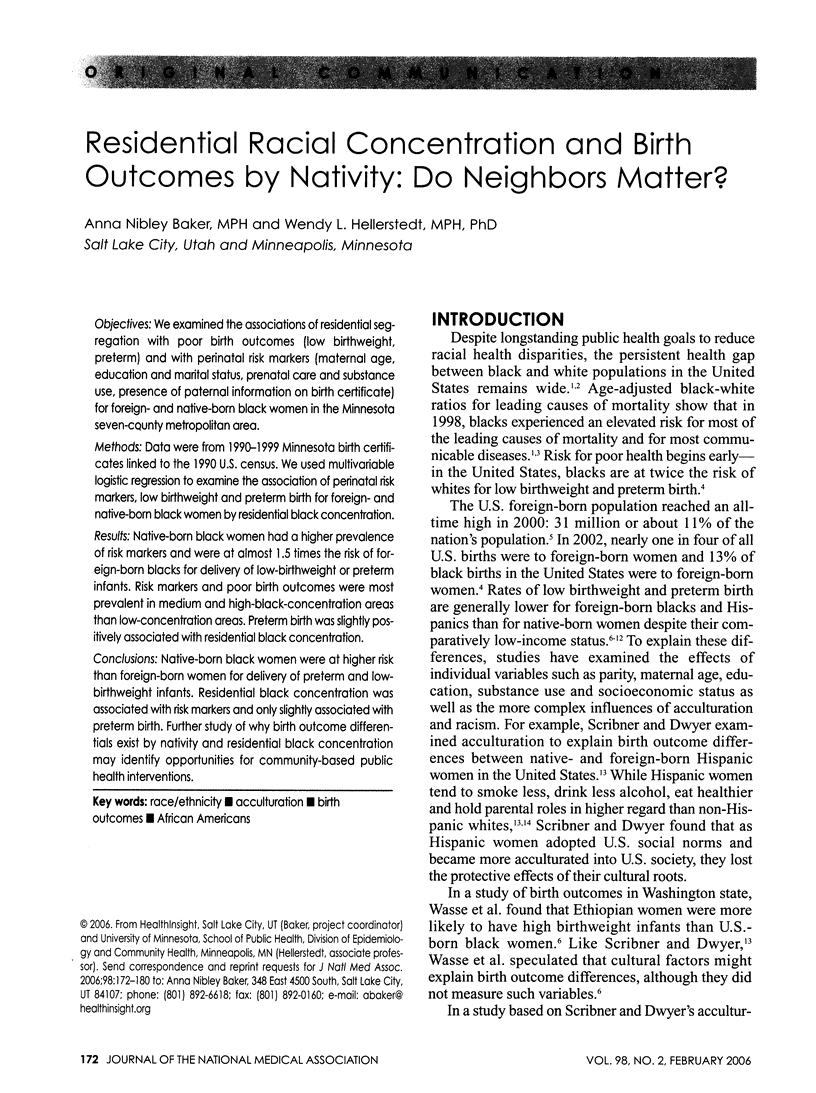
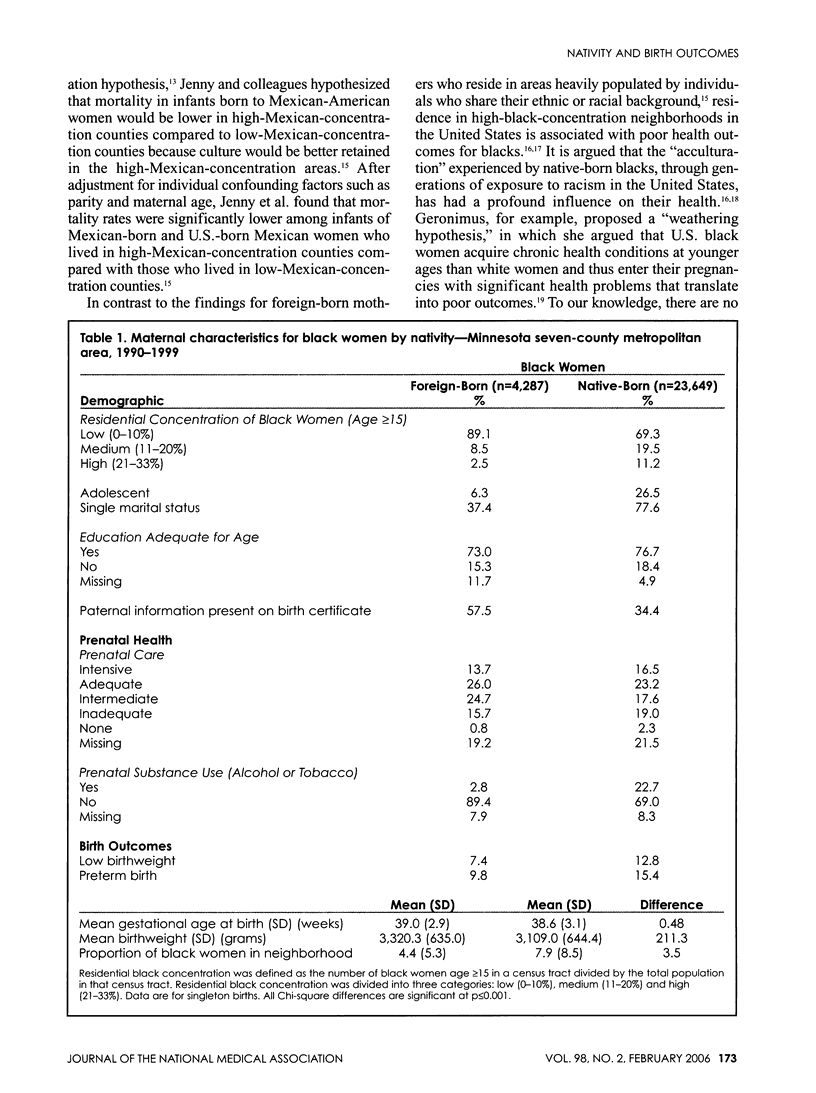
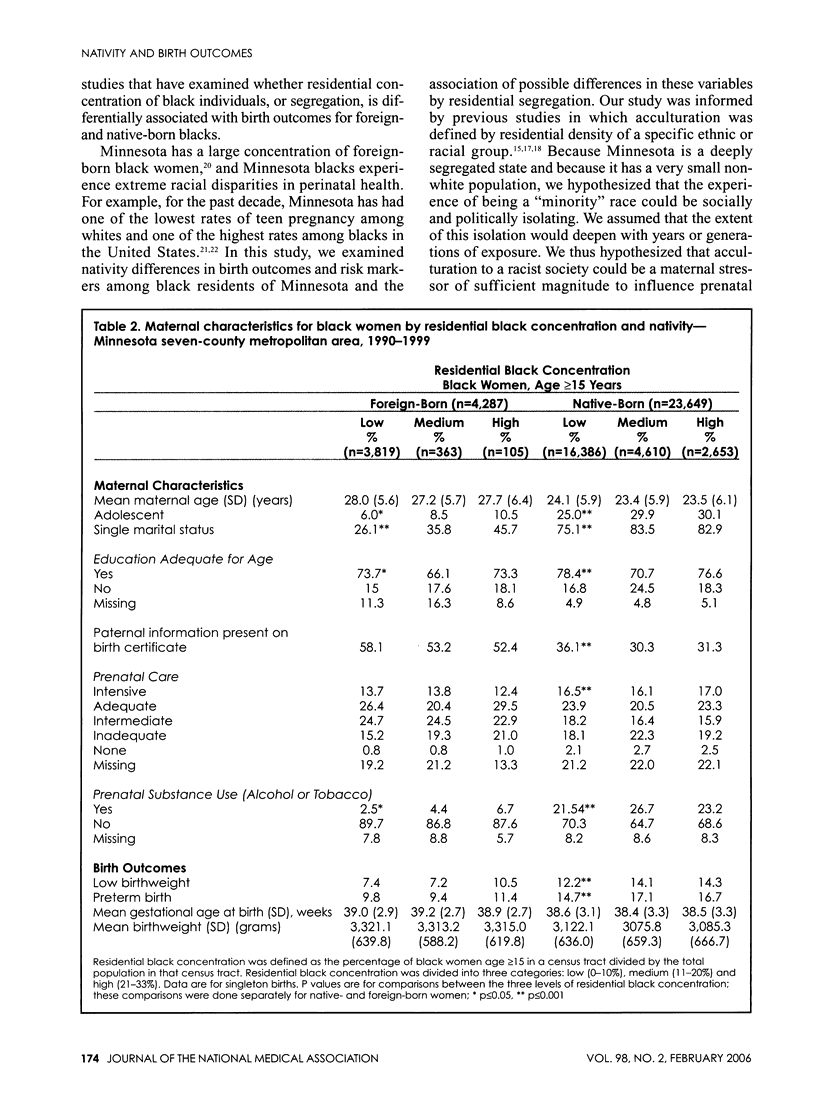
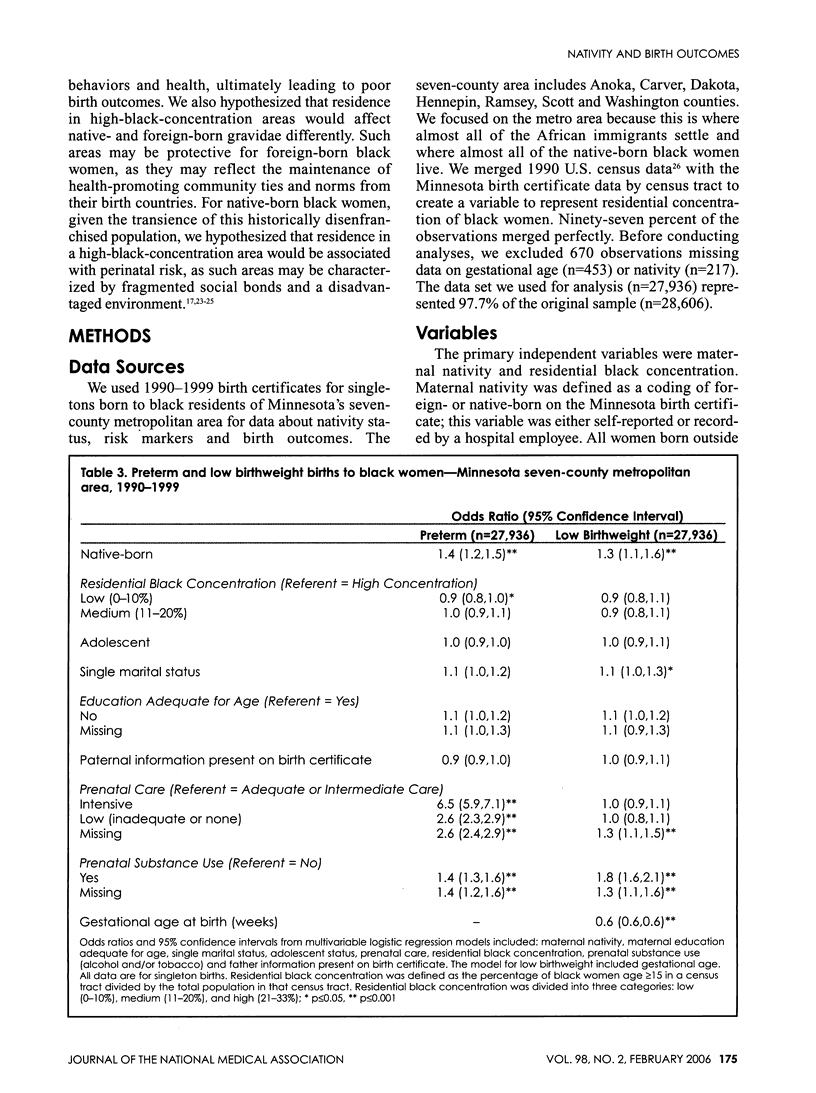
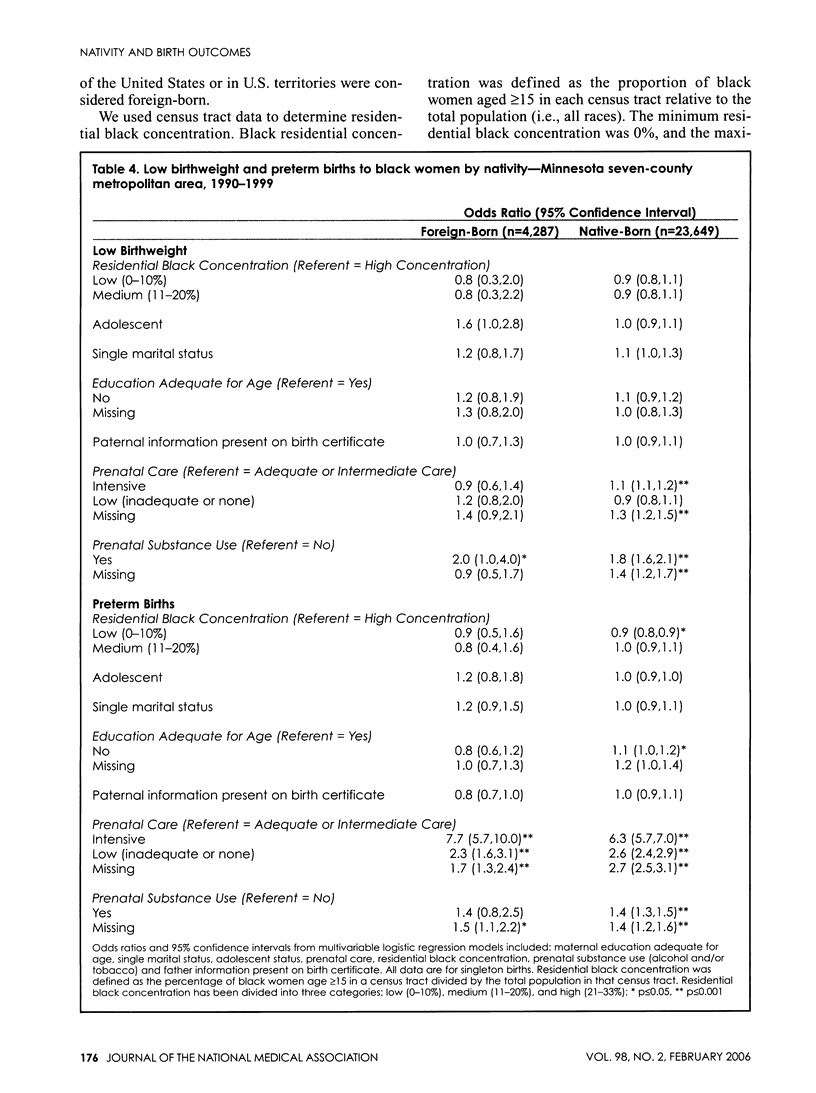
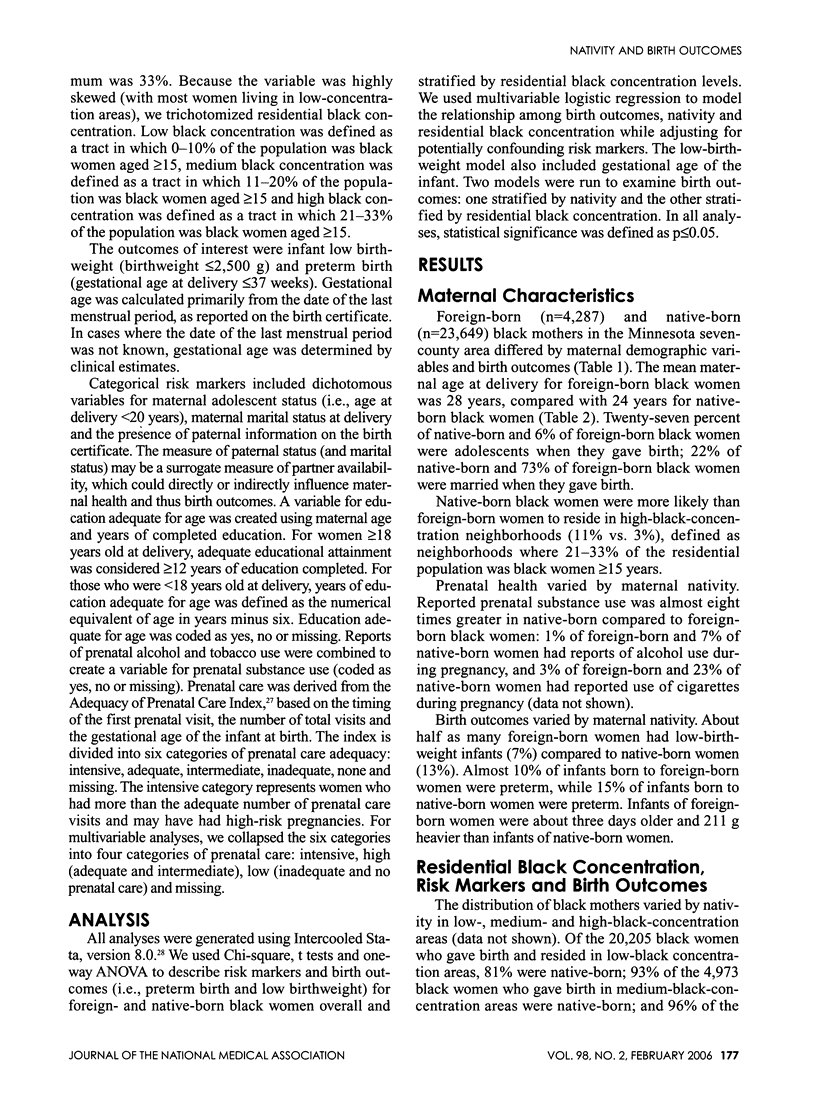
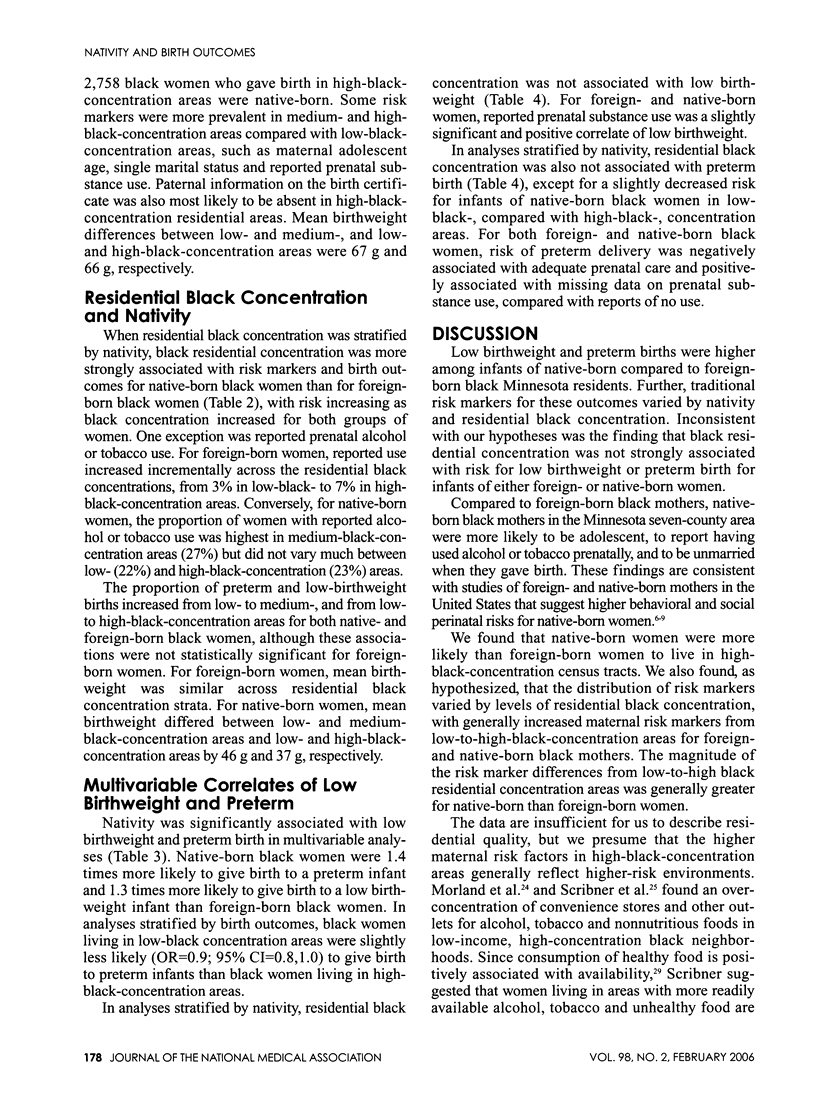
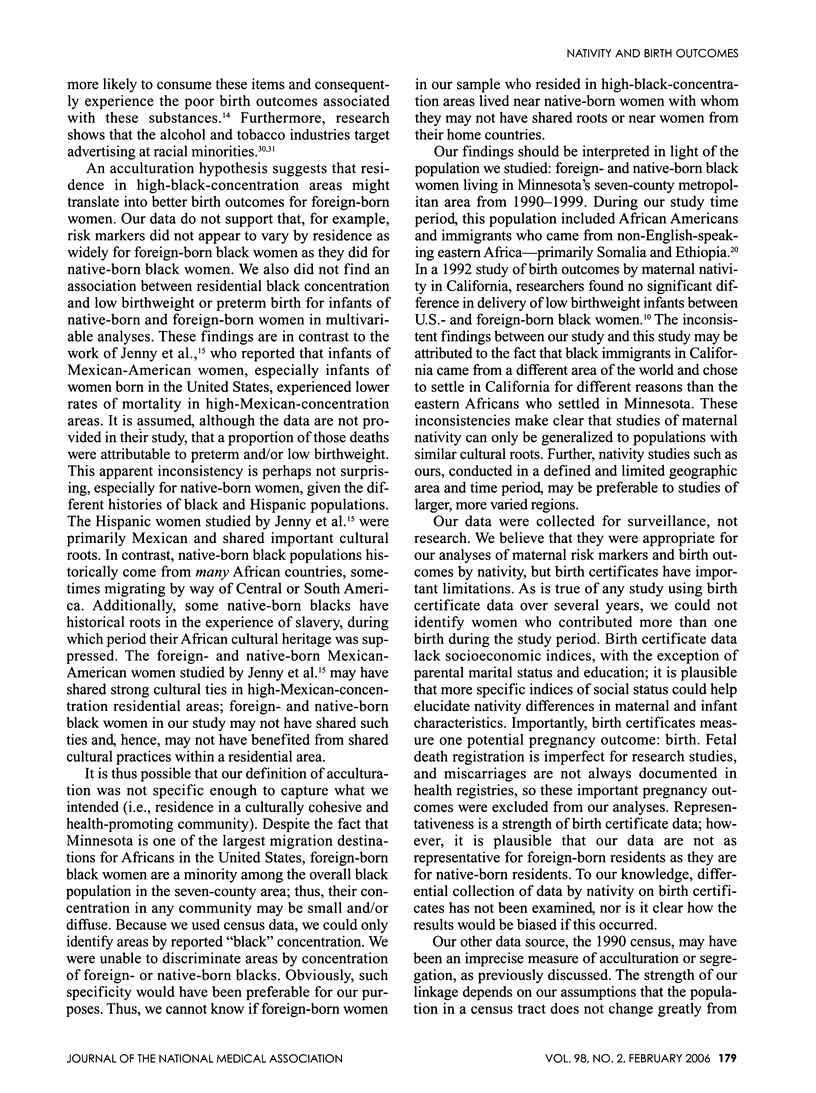
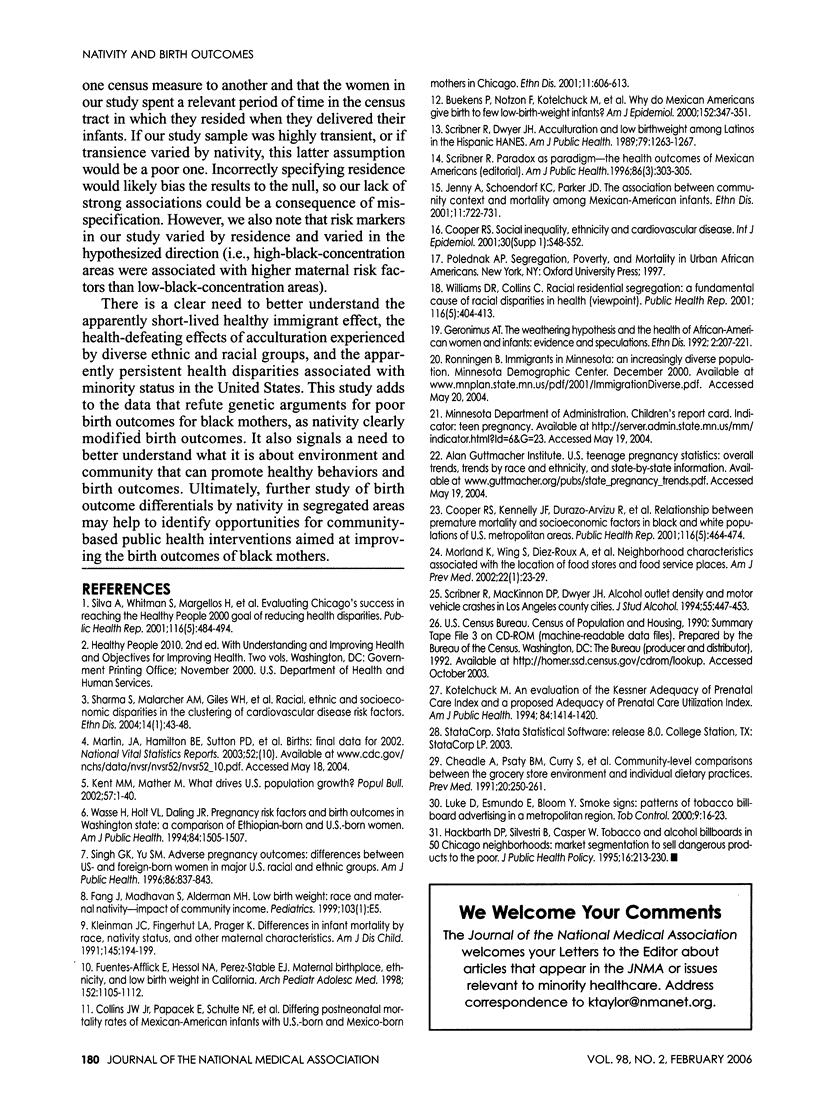
Selected References
These references are in PubMed. This may not be the complete list of references from this article.
- Buekens P., Notzon F., Kotelchuck M., Wilcox A. Why do Mexican Americans give birth to few low-birth-weight infants? Am J Epidemiol. 2000 Aug 15;152(4):347–351. doi: 10.1093/aje/152.4.347. [DOI] [PubMed] [Google Scholar]
- Cheadle A., Psaty B. M., Curry S., Wagner E., Diehr P., Koepsell T., Kristal A. Community-level comparisons between the grocery store environment and individual dietary practices. Prev Med. 1991 Mar;20(2):250–261. doi: 10.1016/0091-7435(91)90024-x. [DOI] [PubMed] [Google Scholar]
- Collins J. W., Jr, Papacek E., Schulte N. F., Drolet A. Differing postneonatal mortality rates of Mexican-American infants with United-States-born and Mexico-born mothers in Chicago. Ethn Dis. 2001 Fall;11(4):606–613. [PubMed] [Google Scholar]
- Cooper R. S., Kennelly J. F., Durazo-Arvizu R., Oh H. J., Kaplan G., Lynch J. Relationship between premature mortality and socioeconomic factors in black and white populations of US metropolitan areas. Public Health Rep. 2001 Sep-Oct;116(5):464–473. doi: 10.1093/phr/116.5.464. [DOI] [PMC free article] [PubMed] [Google Scholar]
- Cooper R. S. Social inequality, ethnicity and cardiovascular disease. Int J Epidemiol. 2001 Oct;30 (Suppl 1):S48–S52. doi: 10.1093/ije/30.suppl_1.s48. [DOI] [PubMed] [Google Scholar]
- Fang J., Madhavan S., Alderman M. H. Low birth weight: race and maternal nativity--impact of community income. Pediatrics. 1999 Jan;103(1):E5–E5. doi: 10.1542/peds.103.1.e5. [DOI] [PubMed] [Google Scholar]
- Fuentes-Afflick E., Hessol N. A., Pérez-Stable E. J. Maternal birthplace, ethnicity, and low birth weight in California. Arch Pediatr Adolesc Med. 1998 Nov;152(11):1105–1112. doi: 10.1001/archpedi.152.11.1105. [DOI] [PubMed] [Google Scholar]
- Geronimus A. T. The weathering hypothesis and the health of African-American women and infants: evidence and speculations. Ethn Dis. 1992 Summer;2(3):207–221. [PubMed] [Google Scholar]
- Hackbarth D. P., Silvestri B., Cosper W. Tobacco and alcohol billboards in 50 Chicago neighborhoods: market segmentation to sell dangerous products to the poor. J Public Health Policy. 1995;16(2):213–230. [PubMed] [Google Scholar]
- Jenny A. M., Schoendorf K. C., Parker J. D. The association between community context and mortality among Mexican-American infants. Ethn Dis. 2001 Fall;11(4):722–731. [PubMed] [Google Scholar]
- Kotelchuck M. An evaluation of the Kessner Adequacy of Prenatal Care Index and a proposed Adequacy of Prenatal Care Utilization Index. Am J Public Health. 1994 Sep;84(9):1414–1420. doi: 10.2105/ajph.84.9.1414. [DOI] [PMC free article] [PubMed] [Google Scholar]
- Luke D., Esmundo E., Bloom Y. Smoke signs: patterns of tobacco billboard advertising in a metropolitan region. Tob Control. 2000 Mar;9(1):16–23. doi: 10.1136/tc.9.1.16. [DOI] [PMC free article] [PubMed] [Google Scholar]
- Morland Kimberly, Wing Steve, Diez Roux Ana, Poole Charles. Neighborhood characteristics associated with the location of food stores and food service places. Am J Prev Med. 2002 Jan;22(1):23–29. doi: 10.1016/s0749-3797(01)00403-2. [DOI] [PubMed] [Google Scholar]
- Scribner R. A., MacKinnon D. P., Dwyer J. H. Alcohol outlet density and motor vehicle crashes in Los Angeles County cities. J Stud Alcohol. 1994 Jul;55(4):447–453. doi: 10.15288/jsa.1994.55.447. [DOI] [PubMed] [Google Scholar]
- Scribner R., Dwyer J. H. Acculturation and low birthweight among Latinos in the Hispanic HANES. Am J Public Health. 1989 Sep;79(9):1263–1267. doi: 10.2105/ajph.79.9.1263. [DOI] [PMC free article] [PubMed] [Google Scholar]
- Scribner R. Paradox as paradigm--the health outcomes of Mexican Americans. Am J Public Health. 1996 Mar;86(3):303–305. doi: 10.2105/ajph.86.3.303. [DOI] [PMC free article] [PubMed] [Google Scholar]
- Sharma Sameer, Malarcher Ann M., Giles Wayne H., Myers Gary. Racial, ethnic and socioeconomic disparities in the clustering of cardiovascular disease risk factors. Ethn Dis. 2004 Winter;14(1):43–48. [PubMed] [Google Scholar]
- Silva A., Whitman S., Margellos H., Ansell D. Evaluating Chicago's success in reaching the Healthy People 2000 goal of reducing health disparities. Public Health Rep. 2001 Sep-Oct;116(5):484–494. doi: 10.1016/S0033-3549(04)50076-6. [DOI] [PMC free article] [PubMed] [Google Scholar]
- Singh G. K., Yu S. M. Adverse pregnancy outcomes: differences between US- and foreign-born women in major US racial and ethnic groups. Am J Public Health. 1996 Jun;86(6):837–843. doi: 10.2105/ajph.86.6.837. [DOI] [PMC free article] [PubMed] [Google Scholar]
- Wasse H., Holt V. L., Daling J. R. Pregnancy risk factors and birth outcomes in Washington State: a comparison of Ethiopian-born and US-born women. Am J Public Health. 1994 Sep;84(9):1505–1507. doi: 10.2105/ajph.84.9.1505. [DOI] [PMC free article] [PubMed] [Google Scholar]
- Williams D. R., Collins C. Racial residential segregation: a fundamental cause of racial disparities in health. Public Health Rep. 2001 Sep-Oct;116(5):404–416. doi: 10.1093/phr/116.5.404. [DOI] [PMC free article] [PubMed] [Google Scholar]


